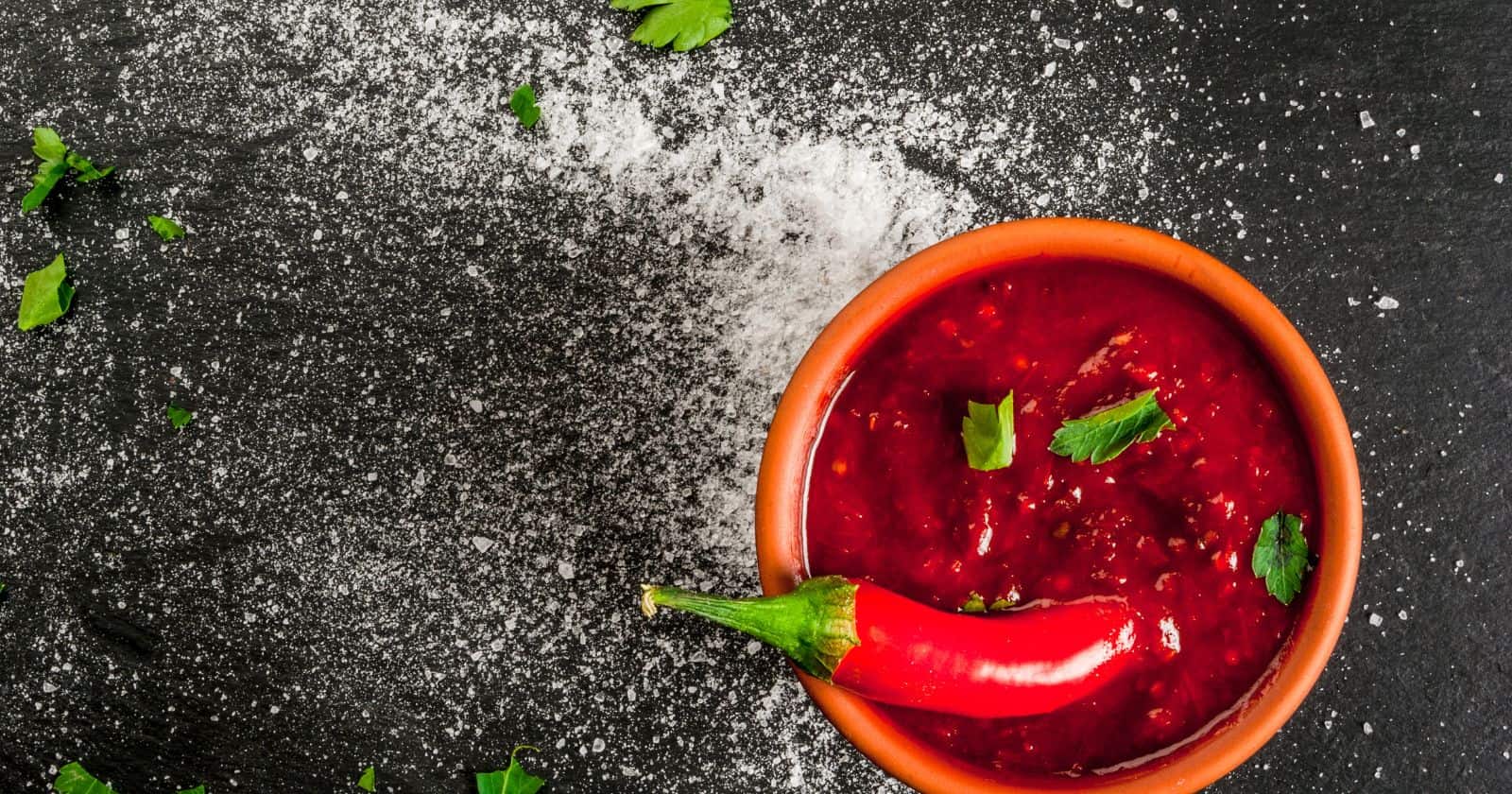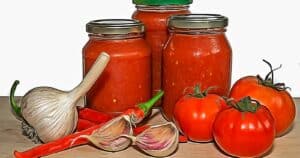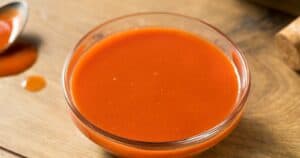That moment of dread when you reach for your favorite hot sauce to liven up your food, only to find it doesn’t smell quite right. We’ve all been there. As a hot sauce aficionado, nothing kills my appetite faster than discovering a bottle of spoiled sauce.
Before you toss that questionable bottle, let me share a few tips I’ve learned over the years for determining when it’s time to say goodbye to your hot sauce.
First, trust your senses. Give the sauce a good sniff. If you detect anything funky or off, it’s likely bad. Check the texture too. Changes like mold growth or separation mean it’s destined for the trash.
Next, think about how long it’s been open. The shelf life decreases dramatically after opening. I’ve found most opened bottles only last about six months max in the fridge.
Also examine the bottle closely. Any odd colors or film along the inside? That’s not a good sign.
Finally, do a taste test if you’re still unsure. But spit it out right away if the flavor is clearly not right. It’s not worth risking illness.
In the end, remember it’s better to be safe than sorry when determining if your hot sauce has passed its prime. Trust me, pitching a spoiled bottle now saves you from disappointment later. With these tips, you can avoid getting burned by bad hot sauce.
Trust Your Nose – Give It a Good Sniff
One of the easiest ways to tell if hot sauce has gone bad is to check its scent. A rancid or funky odor is a clear sign your sauce has spoiled.
Hot sauce can grow mold and bacteria over time, especially after opening. This causes sour, unpleasant smells you’ll notice right away.
Sniff the bottle opening carefully before using any sauce. If you detect anything “off,” it’s best to discard the bottle. Don’t take a chance on sauce that doesn’t smell right.
Examine the Texture and Look for Changes
The texture and appearance of your hot sauce can also indicate freshness.
Check that the sauce still appears smooth and uniform. Separation, clumping, or thin watery texture points to spoilage.
Inside the bottle, look for signs like:
- Mold growth
- Film along the bottle’s sides
- Bubbles or frothiness
- Strange colors or discoloration
Any odd colors, textures, or visible mold mean toss the sauce. Don’t try to salvage separated or “funky” looking hot sauce.
Watch How Long It’s Been Open
An unopened bottle of hot sauce has a long shelf life, often 1-2 years. But once opened, that time frame shortens dramatically.
Most opened hot sauces should be used within 6 months to a year. The fridge extends life a bit, but not indefinitely.
If it’s been over a year since opening, it’s very likely your hot sauce has spoiled, even if refrigerated. Err on the side of caution and discard older sauce.
Also watch for expiration or “best by” dates on the bottle. Those indicate the latest your unopened sauce should be used.
Taste Test Only If Unsure (and Spit it Out!)
If your hot sauce passes the smell, texture, and date checks but you’re still unsure, you can do a small taste.
Use extreme caution with tasting questionable sauce. Even a small amount of rancid or contaminated hot sauce can cause illness.
Dip the tip of a clean utensil or spoon in and touch it to your tongue. Immediately spit out the sauce if the taste is off or strange.
Rely more on your other senses than taste, since smell and texture are stronger signs. But a small taste can confirm if flavors have deteriorated.
Why Proper Storage Is Key
To get the longest shelf life from your hot sauces, proper storage is crucial both before and after opening.
Unopened bottles should be stored in a cool, dry pantry away from heat and light. Refrigeration can extend shelf life too.
Once opened, keep hot sauce refrigerated and make sure the bottle is capped tightly. The less air reaching the sauce, the better.
High heat, humidity, or direct sunlight can quickly cause hot sauce to spoil. Keep bottles away from the stove, dishwasher, and windows.
With ideal storage and the above freshness checks, an opened bottle can stay good for many months after the first use.
What to Do if You Suspect Your Hot Sauce is Spoiled
Trust your senses – if anything seems “off” about your hot sauce, don’t take risks.
When in doubt, throw it out. Getting food poisoning from bad hot sauce is simply not worth it.
Do not attempt to re-bottle, cook, or “fix” spoiled hot sauce. Toss the bottle so it’s not accidentally used. Bleach the empty bottle before recycling.
Be vigilant about contamination too. Clean any surfaces and utensils the suspect sauce touched. Use soap, hot water, and bleach to kill bacteria.
Monitor your health as well if you did ingest bad hot sauce. If you feel sick, seek medical care. Food poisoning symptoms include nausea, fever, chills, and vomiting.
Enjoy Your Favorite Sauces Safely
With a few simple freshness checks and proper storage, you can keep enjoying your favorite hot sauces while staying healthy.
Trust your senses when inspecting sauce bottles. Look for mold, separation, strange colors, and foul odors. If anything seems “off,” it’s best to discard the sauce.
Keep unopened bottles in a cool, dry pantry and opened bottles refrigerated. And remember – when in doubt, toss it out!
Checking your hot sauce regularly using this guide can help ensure it stays fresh, fiery, and delicious every time you grab the bottle to liven up your food.
FAQs About Checking if Your Hot Sauce Has Spoiled
1. How can I tell if homemade hot sauce has gone bad?
The same freshness checks apply to homemade hot sauce. Check for changes in texture, unusual colors or separation, mold growth, and off or sour smells. Taste very carefully if still unsure, watching for deterioration in flavor. Discard at the first sign something seems “off.”
2. What happens if you ingest spoiled hot sauce?
Consuming rancid, moldy, or contaminated hot sauce can cause food poisoning. Symptoms include nausea, vomiting, stomach cramps, diarrhea, fever, and chills. Seek medical treatment if sickness occurs after eating spoiled hot sauce.
3. Can I get botulism from spoiled hot sauce?
Botulism is rare but dangerous. Canned, jarred, and fermented hot sauces carry higher botulism risk. Seek immediate medical help if showing symptoms like blurred vision, trouble swallowing, muscle weakness, and shortness of breath after consuming spoiled hot sauce.
4. How should I clean a hot sauce bottle after throwing away spoiled sauce?
Thoroughly wash and rinse the empty bottle with hot, soapy water first. Then sanitize the bottle by filling with a bleach solution (1 tablespoon bleach per cup of water). Allow to sit 5 minutes before rinsing. This kills any remaining bacteria.
5. Are there signs of spoilage I can check without opening the bottle?
Bulging or leaking bottles, rust around the lid, and very old expiration dates can indicate spoiled contents. But you need to open it to properly inspect aroma, texture, separation, mold, etc. Wipe clean the lid and mouth of the bottle after opening as a precaution before smelling.





